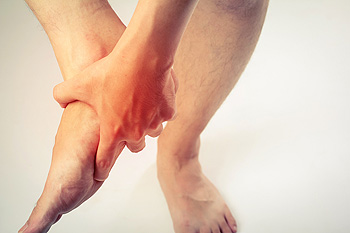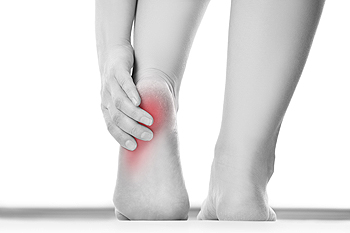Connect With Us
Blog
Items filtered by date: December 2018
Where is Pain from Tarsal Tunnel Syndrome Located?
 If you have pain that is located on the inside of the ankle and foot, you may be experiencing an uncomfortable foot condition that is known as tarsal tunnel syndrome. This condition occurs when the nerves in this area of the foot become damaged and will typically cause severe inflammation. It may develop as a result of walking, running or standing for extended periods of time, or possibly from a serious injury that the foot endures. There may be effective treatment options that may provide partial relief, including performing gentle stretching exercises, resting and elevating the foot, or minimizing any foot pressure that is present. This may often include wearing shoes that are fit looser, which may aid in reducing any tightness around the foot. It is strongly suggested to speak with a podiatrist if you are experiencing this type of foot pain who can aid in properly treating this painful foot condition.
If you have pain that is located on the inside of the ankle and foot, you may be experiencing an uncomfortable foot condition that is known as tarsal tunnel syndrome. This condition occurs when the nerves in this area of the foot become damaged and will typically cause severe inflammation. It may develop as a result of walking, running or standing for extended periods of time, or possibly from a serious injury that the foot endures. There may be effective treatment options that may provide partial relief, including performing gentle stretching exercises, resting and elevating the foot, or minimizing any foot pressure that is present. This may often include wearing shoes that are fit looser, which may aid in reducing any tightness around the foot. It is strongly suggested to speak with a podiatrist if you are experiencing this type of foot pain who can aid in properly treating this painful foot condition.
Tarsal tunnel syndrome can be very uncomfortable to live with. If you are experiencing tarsal tunnel syndrome, contact Raul Hidalgo DPM of South Texas Foot & Ankle Care. Our doctor can provide the care you need to keep you pain-free and on your feet.
Tarsal Tunnel Syndrome
Tarsal tunnel syndrome, which can also be called tibial nerve dysfunction, is an uncommon condition of misfiring peripheral nerves in the foot. The tibial nerve is the peripheral nerve in the leg responsible for sensation and movement of the foot and calf muscles. In tarsal tunnel syndrome, the tibial nerve is damaged, causing problems with movement and feeling in the foot of the affected leg.
Common Cause of Tarsal Tunnel Syndrome
- Involves pressure or an injury, direct pressure on the tibial nerve for an extended period of time, sometimes caused by other body structures close by or near the knee.
- Diseases that damage nerves, including diabetes, may cause tarsal tunnel syndrome.
- At times, tarsal tunnel syndrome can appear without an obvious cause in some cases.
The Effects of Tarsal Tunnel Syndrome
- Different sensations, an afflicted person may experience pain, tingling, burning or other unusual sensations in the foot of the affected leg.
- The foot muscles, toes and ankle become weaker, and curling your toes or flexing your foot can become difficult.
- If condition worsens, infections and ulcers may develop on the foot that is experiencing the syndrome.
A physical exam of the leg can help identify the presence of tarsal tunnel syndrome. Medical tests, such as a nerve biopsy, are also used to diagnose the condition. Patients may receive physical therapy and prescriptive medication. In extreme cases, some may require surgery.
If you have any questions please feel free to contact our office located in San Antonio, TX . We offer the newest diagnostic and treatment technologies for all your foot and ankle needs.
Wounds That Don't Heal Need to Be Checked
Causes of Heel Spurs
 If you have a heel spur, you are most likely familiar with the pain and discomfort this condition may cause. The small, bony protrusion that forms on the heel may be a result of repetitive stress the heel endures, possibly originating from frequent running or jumping. Additionally, if the incorrect shoes are worn, or an abnormal walking pattern exists, a heel spur may begin to develop. Some patients may notice pain in the heel and surrounding area while walking, and it may be quite uncomfortable in the morning when the first steps are taken. There may be measures that can be taken, which may possibly prevent heel spurs from forming. These may include wearing shoes that properly support your feet, performing gentle foot stretches before physical activity begins, and maintaining a healthy weight, which may lessen the amount of pressure the heel may endure. If you have heel pain, it is suggested to speak with a podiatrist who can determine if you have a heel spur and can advise on proper treatment techniques.
If you have a heel spur, you are most likely familiar with the pain and discomfort this condition may cause. The small, bony protrusion that forms on the heel may be a result of repetitive stress the heel endures, possibly originating from frequent running or jumping. Additionally, if the incorrect shoes are worn, or an abnormal walking pattern exists, a heel spur may begin to develop. Some patients may notice pain in the heel and surrounding area while walking, and it may be quite uncomfortable in the morning when the first steps are taken. There may be measures that can be taken, which may possibly prevent heel spurs from forming. These may include wearing shoes that properly support your feet, performing gentle foot stretches before physical activity begins, and maintaining a healthy weight, which may lessen the amount of pressure the heel may endure. If you have heel pain, it is suggested to speak with a podiatrist who can determine if you have a heel spur and can advise on proper treatment techniques.
Heel spurs can be incredibly painful and sometimes may make you unable to participate in physical activities. To get medical care for your heel spurs, contact Raul Hidalgo DPM from South Texas Foot & Ankle Care. Our doctor will do everything possible to treat your condition.
Heels Spurs
Heel spurs are formed by calcium deposits on the back of the foot where the heel is. This can also be caused by small fragments of bone breaking off one section of the foot, attaching onto the back of the foot. Heel spurs can also be bone growth on the back of the foot and may grow in the direction of the arch of the foot.
Older individuals usually suffer from heel spurs and pain sometimes intensifies with age. One of the main condition's spurs are related to is plantar fasciitis.
Pain
The pain associated with spurs is often because of weight placed on the feet. When someone is walking, their entire weight is concentrated on the feet. Bone spurs then have the tendency to affect other bones and tissues around the foot. As the pain continues, the feet will become tender and sensitive over time.
Treatments
There are many ways to treat heel spurs. If one is suffering from heel spurs in conjunction with pain, there are several methods for healing. Medication, surgery, and herbal care are some options.
If you have any questions feel free to contact our office located in San Antonio, TX . We offer the latest in diagnostic and treatment technology to meet your needs.
Blog Archives
- March 2025
- February 2025
- January 2025
- December 2024
- November 2024
- October 2024
- September 2024
- August 2024
- July 2024
- June 2024
- May 2024
- April 2024
- March 2024
- February 2024
- January 2024
- December 2023
- November 2023
- October 2023
- April 2022
- March 2022
- February 2022
- January 2022
- December 2021
- November 2021
- October 2021
- September 2021
- August 2021
- July 2021
- June 2021
- May 2021
- April 2021
- March 2021
- December 2018
- November 2018
- October 2018
- September 2018
- August 2018
- July 2018
- June 2018
- May 2018
- April 2018
- March 2018
- February 2018
- January 2018
- December 2017
- November 2017
- October 2017

